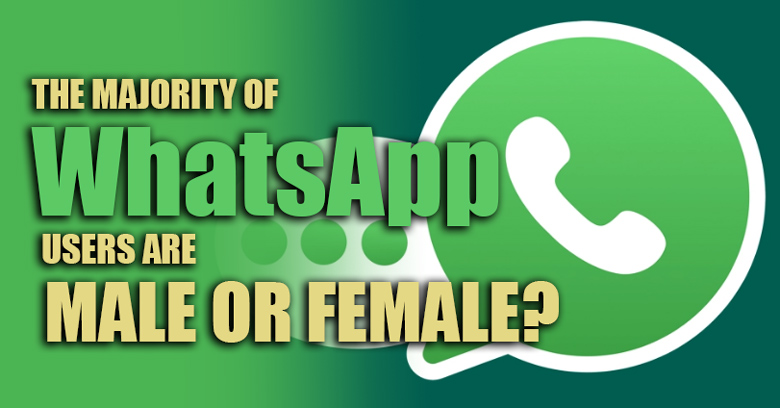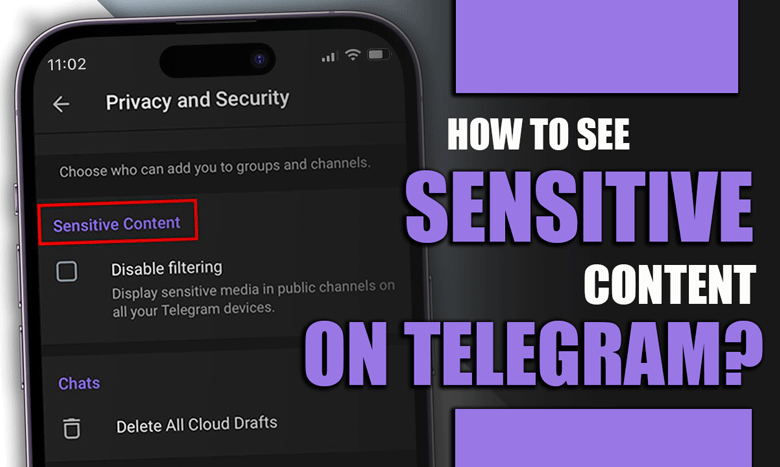The Majority of WhatsApp Users Are Male or Female?

There is no significant gender disparity among WhatsApp users worldwide. However, studies have shown variations in usage patterns across different regions and age groups.
Many have questioned whether the majority of WhatsApp users are male or female.
To get a better understanding of the situation, it is essential to examine the global gender distribution among WhatsApp users and any patterns of usage based on gender, age, or location.
This information is critical for businesses and marketers who want to tailor their messaging to reach a broad audience and leverage the platform’s wide reach.
Global gender distribution among WhatsApp users
Global gender distribution among WhatsApp users is relatively even, with no significant majority of either male or female users.
Statista (a famous statistic researcher) found that 48.8% of WhatsApp users worldwide were female, while 51.2% were male.
Related :
• In How Many Countries is WhatsApp Used?
• How To Clear Out Storage on WhatsApp & Know Who Is Your BFF On WhatsApp?
This distribution may vary slightly from country to country, but overall, the gender split is nearly equal.
However, it is essential to note that while gender may not be a significant factor in WhatsApp usage, other demographic factors such as age and location may play a more significant role.
For example, younger users may be more likely to use WhatsApp for social communication, while older users may use it more for business purposes.
Similarly, in some countries, WhatsApp may be more prevalent among certain demographic groups or regions.
Overall, this has important implications for marketers and businesses using WhatsApp for outreach and communication, as they should consider targeting their messages to a diverse user base.

Age-based differences in WhatsApp user gender
Age-based differences in WhatsApp user gender can play a role in the way users utilize the platform.
While there is no significant gender disparity among WhatsApp users, studies have shown that younger users use the app more frequently for social communication. Older users may use it more for professional or business purposes.
Regarding gender, younger female users may be more likely to use WhatsApp for social communication, while older male users may use it more for business or professional purposes.
However, these gender-based differences are not significant enough to suggest that WhatsApp has a majority of male or female users.
Overall, age-based differences in WhatsApp usage are essential for businesses and marketers targeting their messaging to different demographics.
Factors contributing to gender differences in WhatsApp usage
Several factors may contribute to gender differences in WhatsApp usage:
1. For example, cultural and societal norms may influence how men and women use the platform.
2. In some cultures, women may be more likely to use WhatsApp for social communication, while men may be more likely to use it for business or professional purposes.
3. Differences in technology adoption rates and device ownership also play a role.
4. Women may be less likely to own smartphones or have access to reliable internet connections, which could affect their usage of WhatsApp.
5. Conversely, men may be more likely to have access to the latest technology and devices, making them more likely to use WhatsApp for professional purposes.
6. It is also worth noting that gender differences in WhatsApp usage may be influenced by marketing and outreach efforts.
7. If businesses primarily target their messaging to one gender or another, this could impact the gender distribution of WhatsApp users.
Overall, while gender may not be a significant factor in WhatsApp usage, several factors could contribute to gender differences in how the platform is used.

Conclusion
WhatsApp has a diverse user base with a nearly equal gender distribution globally.
However, age-based differences in usage patterns suggest that younger users use the app more for social communication, while older users may use it more for business or professional purposes.
Factors contributing to gender differences in WhatsApp usage include cultural and societal norms, technology adoption rates, device ownership, and marketing efforts.
Businesses and marketers targeting their messaging to different demographics should consider the factors above.
Overall, it is pretty to say that WhatsApp is widely used by both men and women, with no significant majority of either gender.
So, the answer to the “the majority of WhatsApp users are male or female?” question is almost equal.
So what do you think about this subject? We want to see the comments that you share with us.

![How to Change WhatsApp Ringtone [on Android and iPhone]? 5 How to Change WhatsApp Ringtone [on Android and iPhone]?](https://techinzone.com/wp-content/uploads/2022/11/1666175622-634fd2869e166adm-390x220.jpg)


